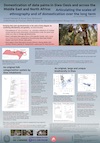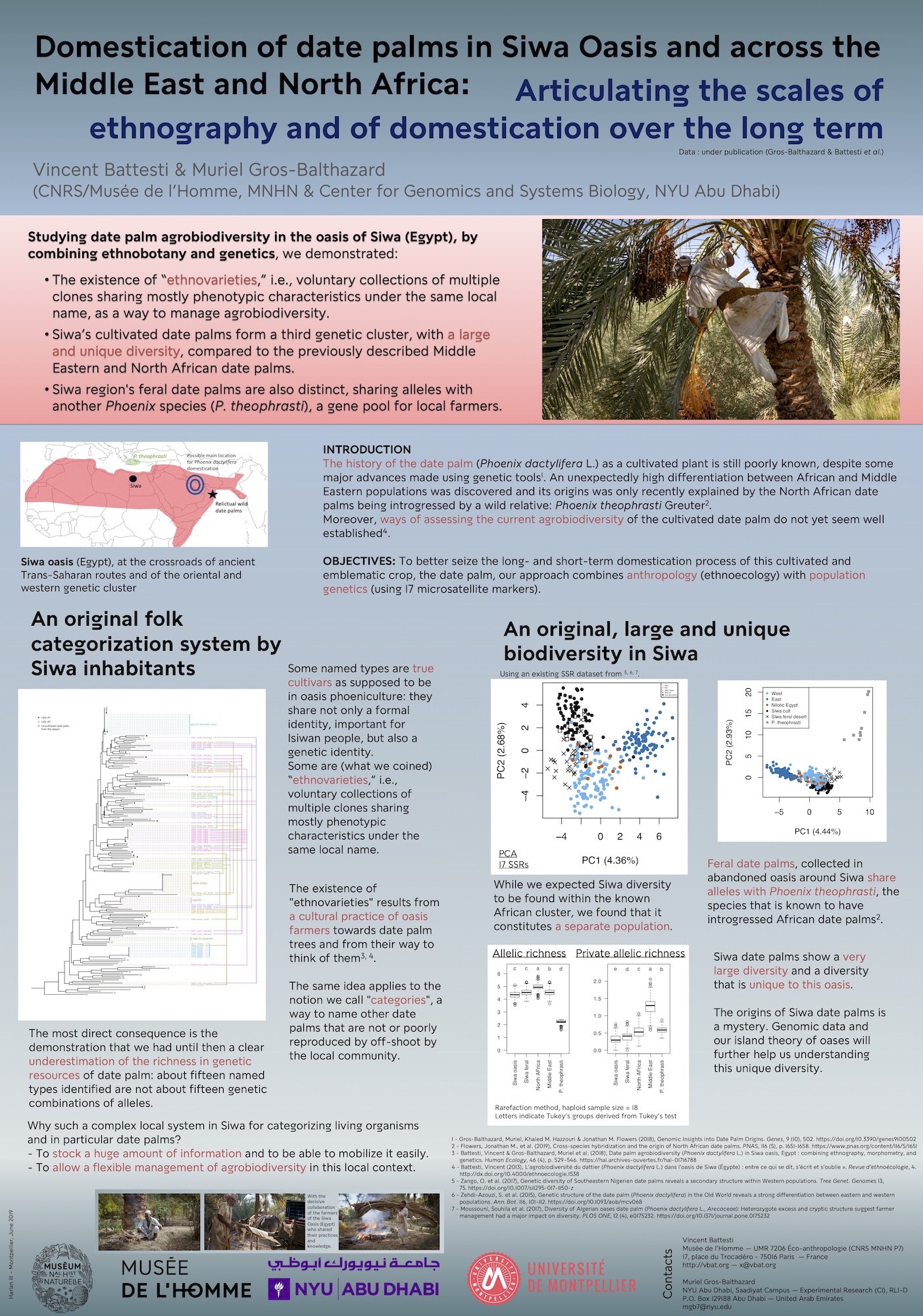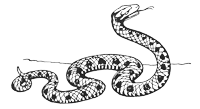Domestication of date palms in Siwa oasis and across the Middle East and North Africa : articulate the scales of ethnography and domestication over the long term
Conf. juin 2019

Poster (en anglais) conçu pour le colloque international Harlan III, : the Third Jack R. Harlan International Symposium Dedicated to the Origins of Agriculture and the Domestication, Evolution, and Utilization of Genetic Resources
avec Muriel Gros-Balthazard,
Montpellier SupAgro, Montpellier (France), du 3 au 7 juin 2019.
– Domestication of date palms in Siwa oasis and across the Middle East and North Africa : articulate the scales of ethnography and domestication over the long term.
Traduction possible du titre : Domestication du palmier dattier dans l’oasis de Siwa et à travers le Moyen-Orient et l’Afrique du Nord : articuler les échelles de l’ethnographie et de la domestication sur le long terme.
pdf : https://hal.science/hal-02270215
– Résumé (en anglais) :
The history of the date palm as a cultivated plant is still poorly known, despite some recent major steps made using genetic tools (2017), and, moreover, ways of assessing the current agrobiodiversity of the cultivated date palm do not yet seem well established.
To better seize the long- and short-term domestication process of a cultivated and emblematic crop, the date palm (Phoenix dactylifera L.), our approach combines anthropology (ethnoecology) with population genetics (and vice versa).
In our first study (Siwa #1 in 2018), we evaluated date palm agrobiodiversity of Siwa oasis, Egypt, located at the crossroads of ancient Trans-Saharan routes, of the oriental and western areas of the domesticated date palm, focusing on diversity both as expressed and maintained by the folk categorization system of Siwa inhabitants (through an ethnographic analysis) and as described by genetic sciences and a morphometric tool based on size and geometry of seeds. We verified that some named types are true cultivars, sharing not only a formal identity, important for Isiwan people, but also a genetic identity. However, we also confirmed the existence of what we coined “ethnovarieties,” i.e., voluntary collections of multiple clones sharing mostly phenotypic characteristics with the same local name, suggesting the genetic richness is higher than the apparent agrobiodiversity estimated by a superficial ethnobotanical approach.
Our current study (Siwa #2, paper in progress) analyzes an expanded collection of genetic samples of feral and cultivated date palms from Siwa in order to confirm the status of local varieties as cultivars or ethnovarieties. Finally, our research should offer new insights on the relative importance of feral and cultivated date palms. By testing these samples with those from a dozen countries, we better understand the biogeography of Siwa date palms in relation to the supra-regional date palms diversity and highlight possible domestication processes on a continental and long-term scale.
– Poster :

- Poster HARLAN III : the Third Jack R. Harlan International Symposium Dedicated to the Origins of Agriculture and the Domestication, Evolution, and Utilization of Genetic Resources






